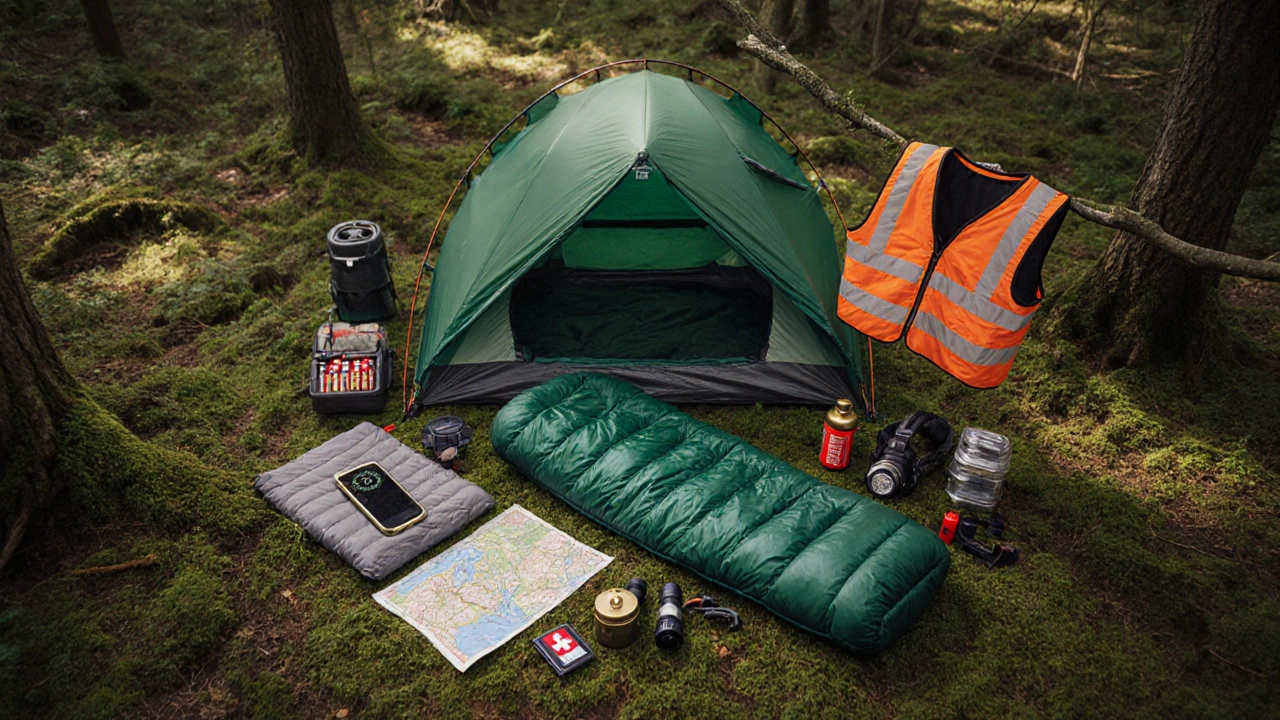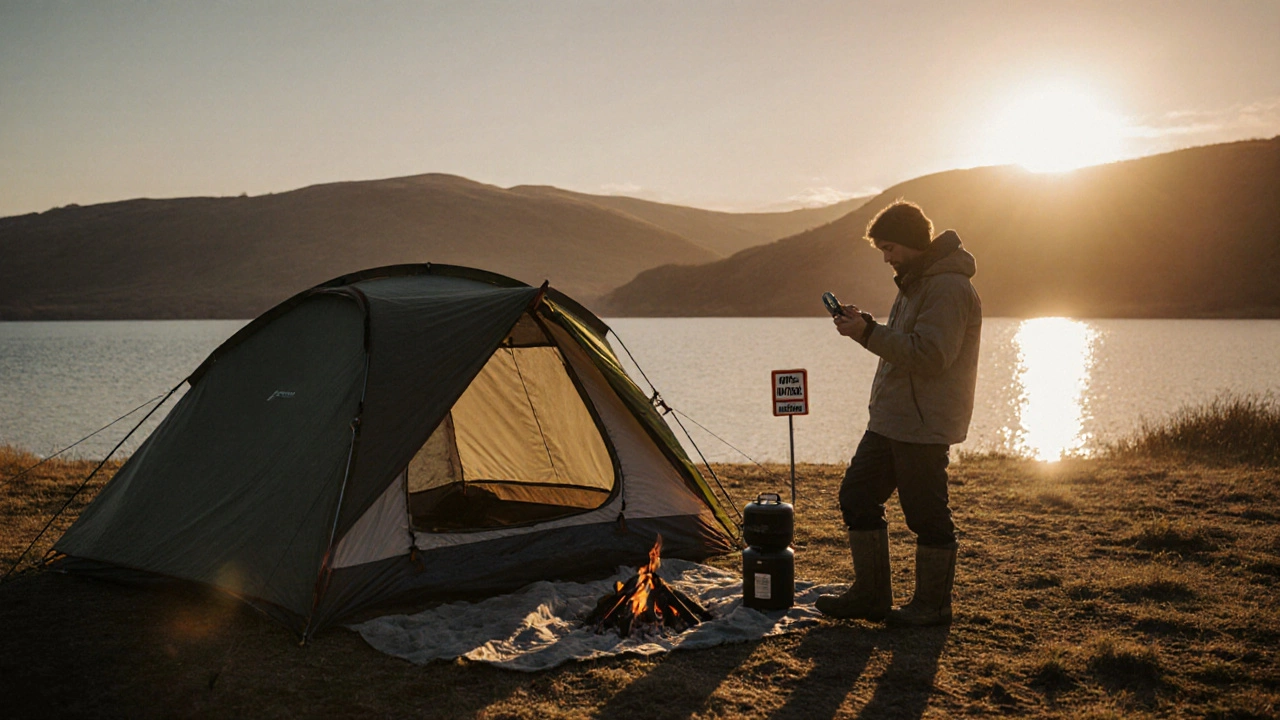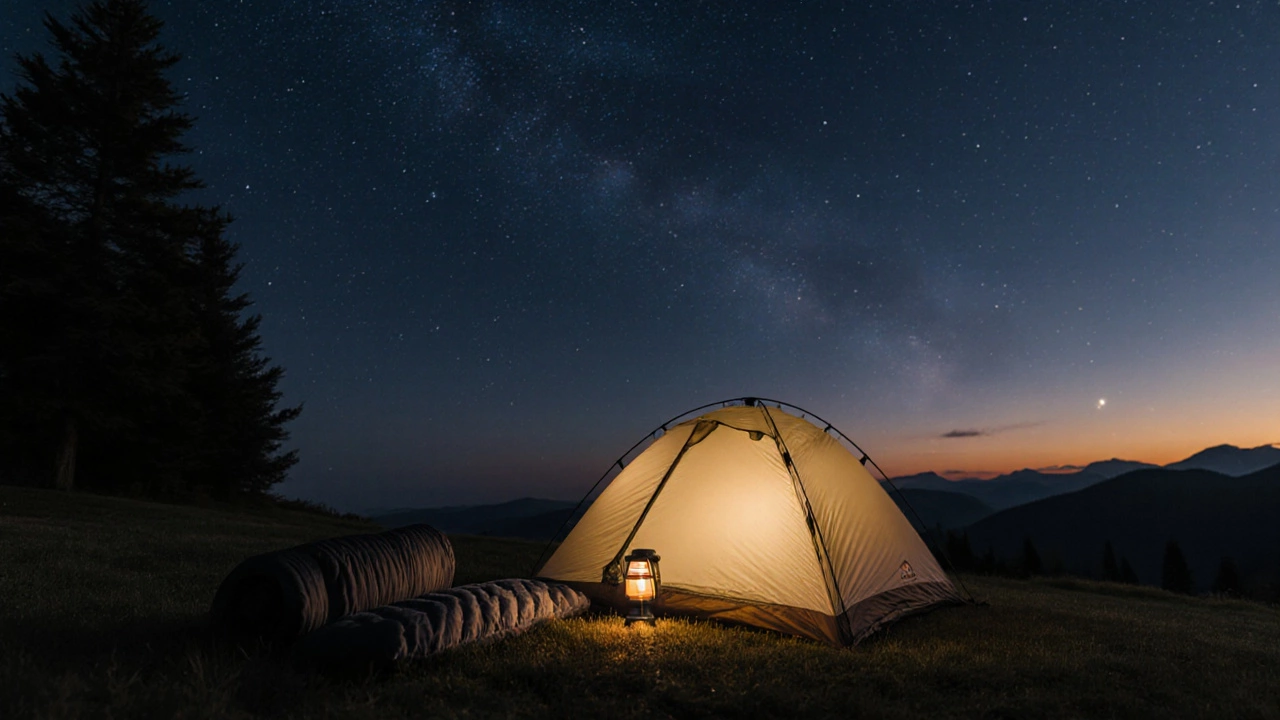Wild Camping Safety Risk Assessment
This interactive tool helps you evaluate potential risks and identify necessary precautions for safe wild camping. Select the risk categories you're concerned about below.
Weather Hazards
Sudden changes in weather conditions can lead to hypothermia, heat exhaustion, or exposure.
Wildlife Encounters
Unexpected encounters with animals can occur, requiring proper precautions and awareness.
Navigation Errors
Getting lost due to poor navigation skills or lack of reliable tools can be dangerous.
Legal Issues
Camping in prohibited areas may result in fines or forced removal by authorities.
No risks selected yet. Click "Add to Assessment" buttons above to begin.
Risk Mitigation Recommendations
You’ve heard the allure of pitching a tent under a star‑filled sky, but is it really safe? wild camping safety hinges on understanding the terrain, the weather, and the hidden hazards that can turn an adventure into a nightmare. Below we break down the biggest risks, the gear that can save you, and the habits that keep you comfortable and out of trouble.
What exactly is wild camping?
Wild camping is a form of overnight outdoor stay outside designated campsites, usually in remote or natural areas. It offers freedom, privacy, and a deeper connection with nature, but it also removes the safety nets that a managed site provides.
Top safety risks you need to know
Every wild camper should be aware of four main threat categories:
- Weather rapid changes, storms, heatwaves, or cold snaps that can lead to hypothermia or heat exhaustion
- Wildlife unexpected encounters with hedgehogs, badgers, deer, or more aggressive animals like foxes and birds of prey
- Navigation errors getting lost due to poor map reading, lack of GPS signal, or misleading trails
- Legal issues camping in prohibited areas can lead to fines or forced removal by authorities
Each risk can be managed with preparation, but ignoring them can quickly turn a holiday into a rescue operation.
Essential safety gear checklist
| Category | Essential Items | Optional Extras |
|---|---|---|
| shelter | four‑season tent, groundsheet, tarp | lightweight hammock, bivy sack |
| sleep system | down sleeping bag, insulated sleeping pad | inflatable pillow, extra blankets |
| navigation | topographic map, compass, offline GPS app | handheld GPS unit, altimeter watch |
| first aid | basic trauma kit, blister treatment, antihistamines | tourniquet, splint, portable AED |
| fire & cooking | lightweight stove, fire‑starter, collapsible cookware | portable grill, extra fuel canisters |
| protection | headlamp with extra batteries, waterproof jacket, insect repellent | bear spray (if applicable), sun hat, UV‑blocking sunglasses |
Focus on the ‘Essential Items’ column when packing light; the optional extras add comfort but are not lifesavers.

Practical tips to stay safe in the wild
- Check the weather forecast up to 48 hours before you head out. Pack layers and a waterproof shell even if the sun is shining.
- Scout the site from a distance. Look for signs of flooding, unstable cliffs, or dense underbrush that could hide danger.
- Set up camp on a flat, well‑drained spot. Avoid low‑lying areas that can become soggy after rain.
- Store food in sealed containers and hang it at least 2m off the ground. This reduces the chance of attracting wildlife especially opportunistic mammals like foxes.
- Carry a fully charged phone and a portable power bank. Even in remote spots, a signal‑boosting app can help you locate the nearest emergency service police, fire, or ambulance.
- Leave a trip plan with a friend or family member. Include your intended route, campsite coordinates, and expected return time.
- Learn basic first‑aid procedures - treat cuts, burns, and hypothermia before they worsen. Keep the trauma kit within arm’s reach, not buried in your bag.
Legal landscape for wild camping in the UK and Ireland
Wild camping legislation varies across the British Isles. In Scotland, the Land Reform (Scotland) Act 2003 grants the public the “right to roam,” which includes sleeping outdoors, as long as you follow the “Leave No Trace” principles. England, Wales, and Northern Ireland have no blanket right, but many landowners tolerate low‑impact camping on open access land.
In the Republic of Ireland, the “right to roam” is limited. Most public lands are private, and camping without permission can lead to a fine. Always check with the local county council or the landowner before pitching.
When in doubt, look for signs, contact the local visitor centre, or use apps that map open‑access areas. Respecting private property not only avoids legal trouble but also keeps good relationships with landowners.
Dealing with wildlife encounters
Most wildlife you’ll meet are more curious than aggressive. Still, a few rules can keep both you and the animals safe:
- Never feed animals - it disrupts their natural foraging behavior.
- Keep a safe distance. For larger mammals like deer, stay at least 15m away.
- If a creature approaches your campsite, make noise, open a light, and give it an escape route.
- In the rare event of a predatory animal (e.g., a badger that feels threatened), back away slowly and avoid sudden movements.
Carrying a small whistle or a bear bell (even where bears aren’t present) can act as an early warning system.

What to do if you get lost
Getting lost is one of the most anxiety‑inducing scenarios for wild campers. Here’s a quick response plan:
- Stop moving. Sit down, stay calm, and take deep breaths.
- Use your compass or GPS to pinpoint your current location on the map.
- If you have signal, call emergency services and give them your coordinates.
- If you’re within a reasonable distance of a known trail, backtrack to the last recognizable landmark.
- If night is approaching and you’re unable to navigate safely, set up a visible shelter, light a small fire (if allowed), and wait for help.
Never wander farther unless you’re absolutely sure of your direction; the longer you roam, the harder it becomes for rescuers to locate you.
Final safety checklist before you head out
- Review the weather forecast and pack appropriate layers.
- Verify legal permissions for your chosen area.
- Check all gear - tent stakes, stove, first‑aid kit - are functional.
- Charge phone, load offline maps, and share itinerary.
- Store food securely and keep cooking area clean.
- Set a reminder to leave a “check‑in” message with your contact.
Follow this list and you’ll lower the risk of a dangerous surprise while still enjoying the freedom of wild camping.
Frequently Asked Questions
Is wild camping legal in England?
There is no universal right to wild camp in England. You can camp on most public footpaths and open‑access land if the landowner permits it. Always look for signs or ask locally before setting up.
What’s the most common cause of injury while wild camping?
Slip‑and‑fall accidents, especially on uneven terrain or wet ground, top the list. Proper footwear, a sturdy groundsheet, and checking the campsite for hazards can prevent most injuries.
Do I need a fire permit for a campfire?
Many parks and forests require a permit or have seasonal bans on open fires. Check the local council’s website or signage. When in doubt, use a portable stove instead of a fire.
How can I protect my gear from rain?
Pack everything in waterproof dry bags or zip‑lock sacks, and keep your tent’s rainfly taut. A simple tarp over your sleeping area adds an extra layer of protection.
What should I do if I encounter a badger?
Give it space and back away slowly. Badgers are generally shy; they rarely attack unless they feel cornered. Keep food stored away to avoid attracting them.
